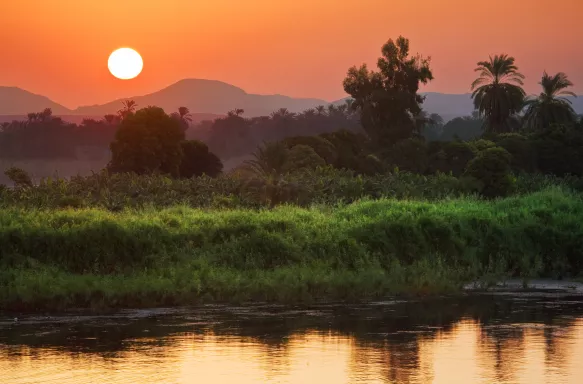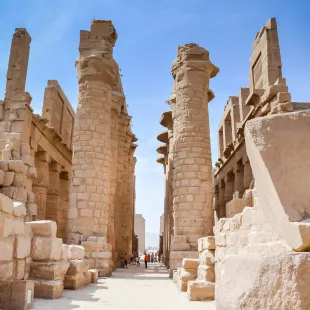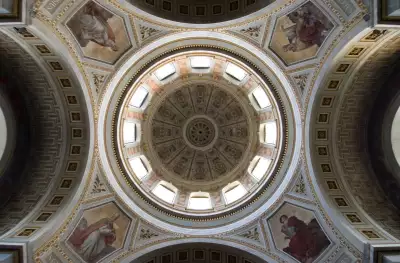What to Expect Along the Nile

Discover the best museums to visit in Egypt, tips on the culture and local customs and entertainment available on board our luxury river cruise.
by Sue Bryant
Egypt is going through something of a tourism boom at the moment so if you’ve always dreamed of cruising the Nile, now is the time to go, before it gets too busy. This is a wonderful time to travel; investment in tourism is paying off, with ancient temples being spruced up and new tombs at Luxor opened for exploration. Visitor numbers are creeping up but are manageable enough for taking in the views of the incredible antiquities without having to dodge a sea of selfie sticks.
Whether you’re planning your first visit, or are returning after a break, here’s a glimpse of what to expect.
- You need stamina to do the Nile justice. You’ll be up early, to see the temples before the sun is too high in the sky, and you’ll do a fair bit of walking. Fortunately, while most Nile cruises cram a short distance into three or four days, Riviera Travel’s extended itinerary from Cairo to either Luxor or Aswan, known locally as the ‘long Nile cruise’, includes several days of pure sailing, so there’s ample chance to laze on deck, enjoy the ship and relax. Click here to view river cruises in Egypt.
- Cairo is an experience; the second biggest city in Africa after Lagos, it’s a maelstrom of cars, motorbikes, camels, dust, people and noise. It’s also a city of magnificent culture and a visit to the Egyptian Museum of Antiquities at the beginning of your cruise will put you in good stead for visiting the tombs and temples to come. Many of the treasures recovered from the tombs in the Valley of the Kings are housed here, not least more than 3,500 items from Tutankhamun’s tomb alone.
- One reason to choose Riviera’s ‘long Nile cruise’ is to delve deeper into Egypt. If you’ve been before, you will no doubt have seen Cairo and the antiquities of Luxor and Aswan. This voyage, though, takes you to the rock-cut tombs of the nobles at Beni Hasan, the magnificent temple of Seti I at Abydos, one of the best preserved in all of Egypt, and the sprawling temple of Hathor, at Dendera, north of Luxor, as well as visiting the better known attractions.
- If you get a chance, go and see Howard Carter’s house at Luxor. It’s a great way of gaining perspective on the excitement surrounding the discovery of Tutankhamun’s tomb in 1922. This domed, mud brick house is where the archaeologist lived, sponsored by Lord Carnarvon, as he searched for the burial place of the boy king.
- The Valley of the Kings visit includes entrance to three of the 64 tombs, which are opened in rotation to preserve the ancient stone inside. There’s an extra fee, around £4.25, to see Tutankhamun’s tomb, numbered KV62. His treasures are in the Egyptian Museum in Cairo but his tiny, shrivelled mummy lies in state in the tomb, 3,341 years after his death. There’s a ‘new’ tomb open, as well. The burial place of Pharaoh Seti I, labelled KV17, will cost another 1,000 Egyptian pounds (£42) entrance fee, which may seem a lot, but it is one of the most lavishly decorated of all.

- Photography isn’t allowed inside tombs without a permit, which costs a few pounds, so do buy one at the entrance if you think you’ll want some shots of the scenes inside. The Valley of the Kings may look bleak from above, but underground, it’s a riot of colour and incredible artwork. There’s no guiding allowed inside the tombs, although tomb guards will point things out – but they may also pressure you for ‘baksheesh’, or a tip. Seemingly everybody you meet in Egypt asks for baksheesh, so make sure you travel with a stash of small denomination notes in Egyptian pounds.
- All the temples in Egypt are different – devoted to different gods or pharaohs and telling different stories. But it’s understandably easy to get ‘templed out’, so pace yourself. Taking an afternoon off is perfectly OK – it’s your holiday, after all. But whatever you do, don’t miss Karnak, arguably the most splendid of all the antiquities, located just outside Luxor.
- Haggling is a way of life to Egyptians and it’s expected, as it’s part of the culture. Whatever you want to buy and however much it costs, you should bargain for it. The only exception is fixed-priced shops like the alabaster workshops around Luxor, or the smarter shops in Cairo. In markets, or souvenir alleys outside all the big temples, you should bank on getting the price down to one third of the original. If in doubt, ask your guide for help. Keep a keen eye out for fakes, too.

- One night per cruise, there’s an Egyptian theme party on board, so prepare to dress up! Egyptian garments are easy to come by in markets, or on board, and it’s fun to join in and even learn a few belly dancing techniques.
- Everybody loves the temples, tombs and Pyramids, of course, but many visitors to Egypt are equally enchanted by the days spent sailing along the Nile. The colours of the desert change as the sun travels across the sky and there’s always something to look at – a water buffalo cooling off in the shallows, the turquoise flash of a kingfisher diving, children running along the bank, waving at the boat.
- Agatha Christie fans should pay a visit to Aswan’s Old Cataract Hotel, the opulent, chandeliered palace where the legendary novelist wrote Death on the Nile. The hotel is spectacular, all Moorish arches, chandeliers and gently whirring ceiling fans. A small shrine to the author sits in the lobby, her chair, desk and portrait cordoned off by a red velvet rope. It’s easy to nip in and have a look (or an expensive beer on the terrace) while you’re exploring Aswan.
- Don’t miss the chance to take a felucca ride while you’re at Aswan. The Nile is at its most scenic deep in Upper Egypt, threaded with granite islands and sandbanks tufted with palm trees, like little oases. You probably wouldn’t want an entire fortnight of living on a felucca (essentially, al fresco, with no facilities) but an excursion as the heat begins to fade is a wonderful way of experiencing local life.
Egypt is a beautiful and fascinating place. From the waters of the Nile to the Pyramids of Giza, there is history everywhere and something new to discover. We have a collection of tours and cruises to Egypt for you to browse at your leisure. If you have any questions, please do not hesitate to contact us.
Sue Bryant
Sue Bryant is an award-winning journalist specialising in (and addicted to) cruising. She is cruise editor of The Sunday Times and also contributes to magazines and websites worldwide, including Sunday Times Travel Magazine, World of Cruising, Cruise Passenger (Australia), Porthole (USA) and www.cruisecritic.co.uk. Sue lives in London but is often travelling, exploring the world’s rivers and oceans. She has sailed on more than 100 ships over the last 15 years.






